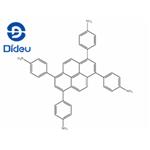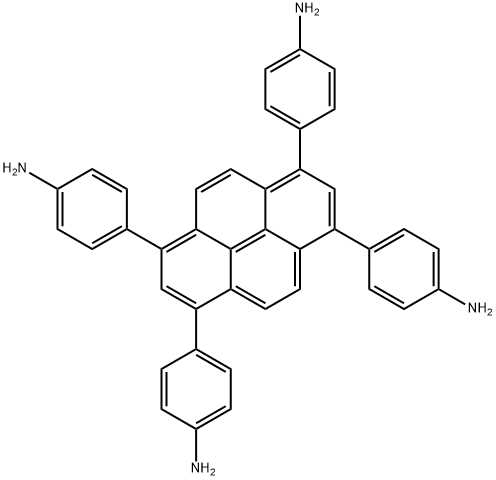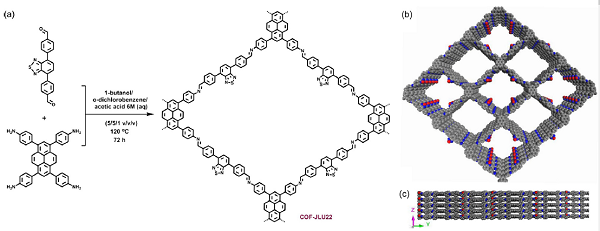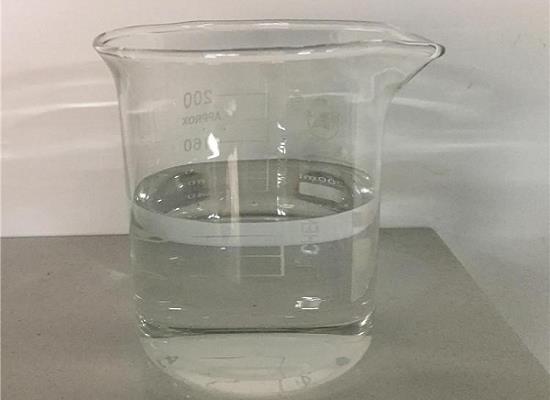4,4',4'',4'''-(pyrene-1,3,6,8-tetrayl)tetraaniline: properties, applications and safety
General Description
4,4',4'',4'''-(Pyrene-1,3,6,8-tetrayl)tetraaniline is a unique organic compound with exceptional properties and diverse applications. It exhibits excellent electron transport properties and strong fluorescence emission in the visible range, making it well-suited for use in organic electronic devices and optoelectronic applications. Moreover, its good thermal stability and chemical resistance enhance its potential for long-term functionality in harsh environmental conditions. The compound has also shown promise in the development of materials with significant photocatalytic activity, high photoluminescence quantum yields for chemical sensing, and reversible switching between sensitive modes for spectral imaging. However, it is important to note that 4,4',4'',4'''-(Pyrene-1,3,6,8-tetrayl)tetraaniline poses potential health risks and safety concerns, requiring appropriate precautions during handling to prevent adverse effects on human health and the environment. Overall, its combination of unique electronic and optical properties makes it a highly valuable compound with diverse and promising applications across various fields, particularly in advanced materials science and technology.

Figure 1. 4,4',4'',4'''-(pyrene-1,3,6,8-tetrayl)tetraaniline
Properties
4,4',4'',4'''-(pyrene-1,3,6,8-tetrayl)tetraaniline, also known as pyrene tetraaniline, is a unique organic compound with a distinctive molecular structure. Firstly, pyrene tetraaniline possesses excellent electron transport properties, making it suitable for use in organic electronic devices such as organic field-effect transistors and organic light-emitting diodes. Its π-conjugated system enables efficient charge transport, leading to high device performance. Furthermore, this compound demonstrates strong fluorescence emission in the visible range, which is advantageous for applications in optoelectronic devices, sensors, and imaging techniques. In addition, pyrene tetraaniline has been found to exhibit good thermal stability and chemical resistance, enhancing its potential for long-term device functionality and durability in harsh environmental conditions. Moreover, its unique molecular structure and electronic properties have drawn attention for potential use in photovoltaic devices and chemical sensing applications. In conclusion, 4,4',4'',4'''-(pyrene-1,3,6,8-tetrayl)tetraaniline's combination of electron transport, fluorescence, thermal stability, and chemical resistance properties makes it a promising candidate for various advanced electronic and optoelectronic applications. 1
Applications
4,4',4'',4'''-(Pyrene-1,3,6,8-tetrayl)tetraaniline is a highly versatile compound with significant applications across various fields. Its use in synthesizing an imine-based COF has led to the development of materials with exceptional properties. The resulting COF demonstrates a large surface area, high crystallinity, exceptional stability, and a broad absorption range in the visible-light region, making it an effective heterogeneous photocatalyst for reductive dehalogenation of phenacyl bromide derivatives and α-alkylation of aldehydes under visible-light irradiation. Furthermore, its good recyclability enhances its practical utility in these processes. The compound's role in creating highly photoluminescent imine-based 2D-COFs has also been highlighted, with these materials being transformed into spherical, sub-micron particles that exhibit high photoluminescence quantum yields. These particles can function as chemical sensors for detecting explosive chemicals with remarkable sensitivity and selectivity at ppm levels, showcasing the compound's potential in sensing applications. Additionally, its application in synthesizing near-infrared-absorbing low bandgap COFs has demonstrated a unique spectral response, allowing reversible switching between different sensitive modes. This innovative capability opens up possibilities for applications in information technology and spectral imaging. Overall, 4,4',4'',4'''-(Pyrene-1,3,6,8-tetrayl)tetraaniline exhibits diverse and promising applications across photocatalysis, sensing, and optoelectronic device development, making it a highly valuable compound in modern materials science. 2
Safety
4,4',4'',4'''-(pyrene-1,3,6,8-tetrayl)tetraaniline poses potential health risks and safety concerns. It is classified as harmful if swallowed, causing irritation to the skin and serious irritation to the eyes upon contact. Additionally, exposure may lead to respiratory irritation. Therefore, appropriate precautions should be taken when handling this compound. Personal protective equipment, including gloves and eye protection, should be worn to minimize skin and eye contact. Furthermore, adequate ventilation and respiratory protection are recommended to reduce the risk of inhalation. In case of ingestion, skin contact, or eye contact, immediate medical attention is advised. Proper storage, handling, and disposal procedures in accordance with safety regulations are essential to prevent adverse health effects and environmental harm. 3
Reference
1. PubChem. COMPOUND SUMMARY: 4,4,4",4-(Pyrene-1,3,6,8-tetrayl)tetraaniline. National Library of Medicine, PubChem CID: 101573330.
2. Gao Q , Li X , Ning GH , Leng K , Tian B , Liu C , Tang W , Xu HS , Loh KP . Highly photoluminescent two-dimensional imine-based covalent organic frameworks for chemical sensing. Chem Commun (Camb). 2018 Mar 1;54(19):2349-2352.
3. 4,4,4,4-(1,3,6,8-Pyrenetetrayl)tetrakis[benzenamine]. European Chemicals Agency, EC / List no. 879-036-1.
Related articles And Qustion
See also
Lastest Price from 4,4',4'',4'''-(pyrene-1,3,6,8-tetrayl)tetraaniline manufacturers

US $5.90-3.90/KG2025-06-14
- CAS:
- 1610471-69-6
- Min. Order:
- 1KG
- Purity:
- 99%
- Supply Ability:
- g-kg-tons, free sample is available

US $0.00/kg2025-03-12
- CAS:
- 1610471-69-6
- Min. Order:
- 1kg
- Purity:
- 99%
- Supply Ability:
- 10000KGS



